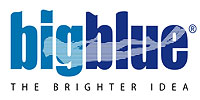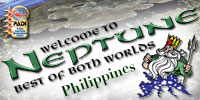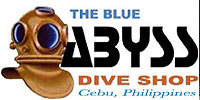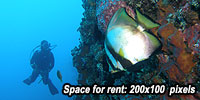GLOSSARY
Aposematic: conspicuous, warning color display.
Aposymbiotic: organisms that do not have symbiotic zooxanthellae in their tissues.
Asexual: reproduction by fragmentation or budding, not the combination of egg and sperm.
Autotomy: the ability to dislodge or drop off a part of the body.
Axil: inner base of pectoral fin.
Barbel: fleshy sensory appendage, usually near mouth.
Benthic: living on or close to the sea floor.
Bilateral symmetry: symmetry which divides a body along a single plane into identical halves.
Carapace: chitinous shell enclosing the body of crustaceans.
Caudal: referring to the tail of an animal.
Cavity: chamber or internal space.
Cerata: processes on the dorsal surface of aeolid nudibranchs which contain a branch of the liver
diverticulum, and function as respiratory organs.
Cheliped: the claw bearing appendages of decapod crustaceans.
Ciguatera: fish poisoning caused by Ciguatoxine.
Cirri: the feeding legs of barnacles, or the projections on the bottom of a crinoid used in holding it attached to the substrate.
Cnidarians: animals with stinging cells, the members of the animal phylum Cnidaria.
Commensalism: a relation between two kinds of organisms in which one obtains food
from the other without damaging it.
Cortex: the outer or surface tissue layers of animals or organs.
Detritus: organic matter, primarily plant material.
Ectoparasite: parasite occurring on outer surface of body or within mouth or gill chamber.
Ecosystem: a unit of biological organization composed of biotic (living) and abiotic (physical) components.
Endemic: found only in a given limited region.
Gastrozooids: the feeding polyp in hydrozoan colonies such as hydroids and hydrocorals.
Hermatypic: corals that directly contribute to the building of a coral reef.
Intertidal: portion of the shoreline or reef that is between the lowest and highest tides.
Marginal: along the outer edge (fins or mantle).
Mimic: a species, that closely imitates another.
Nematocyst: a minute stinging cell found in the epidermis of colenterates, used for food capture and defense; composed of a
spherical capsule with a coiled, hollow, tread-like tube and a reservoir of phenol or protein toxins.
Nocturnal: active during night.
Ocellus: round spot surrounded by a ring of contrasting shade or colour.
Operculum: the door closing a snail shell or bryzoan zooid.
Osculum: the larger, excurrent opening of a sponge.
Oviparous: egg-laying.
Ovoviviparous: a mode of reproduction in which the fully developed young hatch already
inside the mother's uterus.
Parapodia: flap-like lateral body extensions which arise ventrally.
Pelagic: in open water, well above the bottom.
Periostracum: the brownish protein covering of the shell of many mollusk.
Phylum: is a taxonomic rank, species, family, class.
Pinnate: with feather-like branches.
Polyp: any stationary or attached individual of a coelenterate colony, composed of a mouth surrounded by a ring of tentacles.
Pores: surface openings for internal water circulation.
Radula: a file-like extensible feeding structure found in most mollusk; it bears numerous chitinous teeth.
Rostrum: a forward growing extension of the carapace.
Symbiotic: living together in a way that benefits each party involved.
Thallus: shoot or twig.
Thermocline: zone of rapidly dropping temperature with increased depht.
Zooxanthella: symbiotic algae.











